The presenter, turning his back to the audience, reads the presentation outline from the screen in a quiet, monotone voice. The first point of the outline is, “outline.” This slide then morphs into a list of eight long bullet points. You read them quickly and patiently wait until the presenter catches up with you. You give it your best, but feel the mind drifting away when a binomial equation flies in along with a graph too small to read. Finally, you give up when the beam of a shaking laser pointer blinds someone sitting next to you.

OK, it is an exaggeration to expect all these gems in a single conference presentation, but separately you have surely seen them all if you have attended a single day of an academic conference.
Despite what you might think, presenting is not a talent. It is a skill that can be learned. I once was the presenter who made the audience daydream about the menu of the next lunch break. After realizing my weaknesses, I put in the work to improve. Now presenting is one of the cornerstones of my academic career.
Skilled presentations make others interested in reading and citing your papers. They open doors to expand your professional network and join research projects. In other words, a good conference presentation will increase your recognition among peers to further your academic career.
In this article, we will go through the following ten steps. You can use these steps to learn giving an effective and memorable scientific conference presentation:
Step 1: Understand the purpose of a conference presentation
Most researchers think of presenting at a conference simply as a way to summarize the research article. They first present the methods, materials, and equations; then turn to the results and finish with the conclusions.
Even if you would be able to squeeze all the information from your paper in the 20 minutes of a typical conference presentation (which you cannot), the listeners will surely not memorize all the tables and methods that you present. And, because they can retrieve the details from your articles afterward, they do not have to.
If reporting your research paper is not the primary objective of a conference presentation, what is it then? These two overarching goals should always be in your mind when giving any kind of academic presentation:
- Generate interest in your research
You will generate an interest in your research by providing a context of your work and by telling a compelling story of your accomplishments as well as the struggles that lead to the results. - Create a memorable image of you as a competent researcher.
You will establish competence by using appropriate technical terminology, coherently demonstrating and analyzing your results, presenting counter-arguments, and drawing meaningful conclusions.
Step 2: Satisfy the wishes of the listeners
When preparing a conference presentation, first think of what it is that your listeners want to hear.
It seems only logical when asked like this, but stop and think about it for a minute. Most conference presentations I have heard are about what the presenter wants. He or she wants to:
- explain his methodology;
- show the results;
- lay out the conclusions;
- suffer through questions with dignity;
- relax after the presentation is finally done.
This is not what the listeners want to hear! They are after:
- new ideas for starting his own projects;
- new methods and materials that can improve his research so that she can publish more papers;
- ideas for how to improve his efficiency so that they can spend more time with friends;
- entertainment because they are sitting through a day full of presentations that do not deliver them what they want;
Before starting to prepare your presentation, analyze who is going to be in your audience, what are their interests, level of expertise, and expectations from your presentation.
Step 3: Set a goal

What is your goal? Do you want the audience to read your paper? Join you in forming a new research project? Have them try your new test method? Find a partner for a research project? Approach you for new ideas for future research? Sponsor your next research? Offer you a job?
Only when you have managed to satisfy the wishes of the listeners can you hope to gain something in return. Aligning your goal with the wishes of your listeners means you have a chance of reaching it.
Of course, it might be that you are in the middle of a research project and none of the above applies to your situation. In that case, perhaps you are interested in encouraging a healthy discussion that will help you in the execution of the project?
Once you have figured out what is your goal, do not make the audience guess iSimplifyde a call to action at the end of your presentation and you will increase your chances of reaching your goal.
Step 4: Start with “Why”
In too many cases the presenter jumps right into the methodology of the research without giving much attention to explaining why he/she is doing the research in the first place.
The listeners need to feel the pain that you as a researcher are feeling. Sure, in a narrowly specialized conference, the listeners might already know the background of the topic. This should not stop you from explaining the context. If they already feel the same, they will be convinced of the importance of continuing to listen to how you did the research and what you found.
If they do not feel the same, this is your chance to convince them. Some might just start to care!
There are at least two ways of explaining the “why” question. The traditional approach of researchers is to rely on facts and logic. You can bring in evidence from other researchers and your own previous research to describe where your current work fits. Then explain why the problem is important. Here is an example:
The amount of carbon dioxide in the atmosphere is by a third higher than at any time during the last millennia. This is a result of human activities and contributes to climate change. We are at the point where this is affecting every one of us through more frequent extreme weather events, rising sea level and water shortage in many places across the globe.
Another, less usual approach in a conference presentation, is to tell a story. This will let you stand out from the other presenters and arguably is more likely to spark an interest in indifferent listeners.
Try something like this:
I recently read an article in the Economist about the Arsieni, a family of farmers from Sicily in Italy. Their family has been caring for olive gardens for centuries. Some trees have even seen the age of Napoleon.
In 2019 the production in their garden was down 70% compared to just two years earlier. This is how quick a bacterium called Xylella fastidiosa spread into their olive trees and is taking over much of Italy’s southern olive gardens. It is estimated that more than 1 million olive trees have been killed by the bacteria already. The astonishing speed at which this bacteria spreads can be explained by extreme weather events like harsh summer droughts and spring frosts that have weakened the trees while unusually warm winters have allowed the bacterium to spread north.
The Arsieni family feels the effect of global climate change not through TV news, but through the palpable decision of whether to try saving their farm or give up and leave. Unless we fight climate change, every one of us will soon start feeling its effects first hand, just like the Arsieni family.
Step 5: Keep it simple
Your research results might be complicated. Sometimes the more you research something, the more contradictory it gets. For this reason, delivering a simple yet strong conference presentation is difficult. But that is the whole point. This is the test of your capabilities as a researcher.
You have to understand the topic deeply enough to be able to distill it down to the essence in order to explain it to people who do not work alongside you every day. It is up to you to interpret the data and tell what it means. If the listeners can not follow your presentation, it is your problem, not theirs.
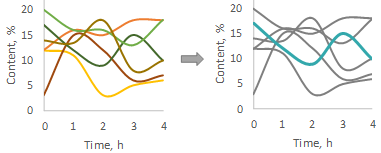
Remember that in most cases you will be presenting something that is novel to the audience. The expertise of most of the listeners, at best, will only partially overlap with yours. That is the point of attending a conference. The listeners do not have to be experts in your topic; that is why you are on the stage and they have come to listen.
Pick a couple of key points that you want to explain and focus on them. Instead of sweeping broadly over many things, choose your most important contribution and go deep. In other words, explain thoroughly or not at all.
Step 6: Prepare the slides
The first step in preparing the presentation slides is to switch off the computer. Instead, use sticky notes to develop a storyboard on your desk. Each note represents one slide in your presentation. Sketch all the information you plan to have in the slides on these notes, including text and drawings. Naturally, this is just a sketch, you do not need to go Picasso on them.

There are several advantages to this approach.
- Sticky notes are easy to move around, thus you will be able to rearrange them to refine the sequence of your slides to best support the structure and the message you want to convey.
- Sticky notes are also easy to throw in the paper bin if any seem unnecessary. This is not always the case with the slides on the computer. If you have already invested considerable time in designing a slide you might start to feel attached to your work and strangely obliged to include it in the presentation.
- Sticky notes double as a check for the simplicity of your slides. Sketching on a small piece of paper will make you simplify the information and reduce the level of detail. You should be able to draw at least the primary graphic of each slide on the sticky notes in sufficient detail. If you can not, it is probably too complicated for a conference presentation anyway.
Once you have the presentation drawn out on sticky notes, turn your computer back on. Here are the key things to remember for designing the slides:
- Limit yourself to one single thought per slide. This could be, for example, a figure and several supporting bullet points taking up not more than one row each. You can add as many slides as you like. There is no invisible jar that will start to spill over if you put too many slides inside. A single thought per slide will allow the audience to better follow the flow of the presentation and, because of allowing you to increase the size of the information, it will make sure people in the back row can actually see it.
- Do not use slides as a teleprompter for remembering what to say next. Most often this takes the form of the dreaded bullet-point list. Too much text will draw the listeners’ attention away from you and toward reading the text on the slide. You are the main actor of the presentation, not the slides.
- Instead of using the slides as a script, use this valuable real estate for information that supports your narrative, not duplicates it. In most cases, this will mean using them for visuals, for example, charts with results or images that provide a deeper context to your story. Visuals naturally draw our attention and can do a great job explaining things that would be difficult to put in words. But unlike text, they complement your narration instead of competing with it.

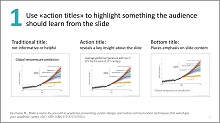
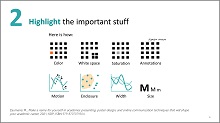
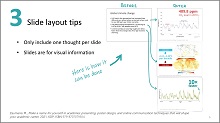
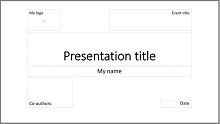
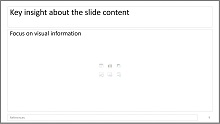
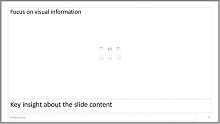
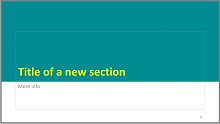
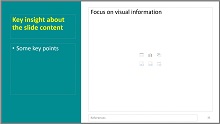
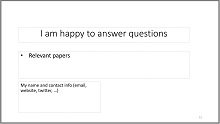
You will access these free Powerpoint scientific presentation slide templates in the download
Step 7: Make a show
Scientists are hard-core, fact-based beings that make cold-blooded decisions solely based on rationale. They do not watch presentations to get entertained! They consume information, process and categorize it in their memory for later use. Ahh, if only it was so…
In fact, we are constantly overwhelmed by the amount of information that we have to digest at a conference. Adding a little bit of show to your conference presentation will be a welcomed break from all the bullet points and equations that the listeners have to endure throughout the day.
It will help to reach the two main goals of presenting (see step 1).
Here are some ideas:
Dramatize the act
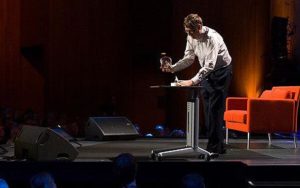
Bill Gates gave a TED talk on how his foundation is helping to fight malaria. At first, he explained that the disease is spreading through bites of mosquitoes. Then, to the surprise of the audience, he opened a can and released a swarm of mosquitoes in the presentation hall. After a short pause, he added that these mosquitoes are not infectious but the attention of the audience was certainly captured.
Dramatization ideas:
- Bring an example of your work, and pass it around the audience.
- Do a live demonstration of your code.
Change the medium

A professor once told me about an experiment he did in the first class of the semester. He stepped away from the slides and drew a car wheel on a flip chart. He added some arrows to explain the forces that occur on it during braking. At the end of the semester, he asked the students to recall the first lecture and surely, the students were able to recall the drawing down to specific details of the spokes that the wheels had.
Other ideas:
- Play a video or a clip of your experiment to highlight the problem you are solving.
- Show full-screen pictures or animation.
Interact with the listeners

When you ask a question, the listeners are forced to think about the response and thus get When you ask a question, the listeners are forced to think about the response and thus get re-focused on you. This question might be a poll where everyone votes on a certain question by the raise of hands. But it might also be a rhetorical question where you do not expect an actual answer. The question itself will provoke the listeners to think about the topic and form an answer in their heads. In many cases this alone will do the job – you will have their attention again.
Question ideas:
- Who knows this technique?
- Who is a part of XYZ group?
- Guess what happened next?
After posting the question, remember to make a short pause to give the listeners time to think.
Use analogies
Probably the most influential analogy in science is the explanation of the theory of special relativity by Albert Einstein using an example of two people observing a moving train.
An analogy uses something that is familiar to the listener in order to explain something that is hard to understand. In science, analogies can be a very powerful tool to explain a complex subject that is difficult to visualize by using analog concepts that are known and easily perceivable by the listener.
Tell a joke

I was once approached after a conference presentation by someone in the audience who said that mine was the best in the whole conference. Unfortunately, this was not because I had the most ground-breaking research results. No, the listener had another metric. I had made the audience laugh three times, while other presenters had managed a maximum of two. Admittedly, the third time was unplanned – I “stole” the remote and the next presenter had to wait until I ran from the back of the audience to give it back.
There is no universal recipe for a good joke, and telling a joke on stage will take courage. You have to feel somewhat at ease with public speaking. If this is not the case yet, start with some other elements to make your conference presentation memorable.
Step 8: Tell a story
In a famous (and very old) experiment, cognitive psychologists Heider and Simmel showed a group of students a short movie in which a circle and two triangles move while a rectangle stays stationary on the screen. Almost all the respondents described the movements in terms of actions of live beings, mostly persons. Most people saw that one of the triangles is bullying the other characters. See yourself if you can resist the urge to assign personalities to the geometrical shapes in this movie:
We make up stories even where they do not exist. It is easier to memorize and describe a circle being bullied by a triangle than to retell the same scene in terms of geometric movements.
Think back to the last presentations you heard at a conference. Do you remember which bar was higher in a chart or rather one of the stories that the presenter told?
The story you tell does not necessarily need to feature fantastic events or have an amazing outcome, but it should support a point that you are making. In fact, a short, vivid story originating in your research life is probably going to fit a conference presentation best. This is because the listeners can imagine something similar happening to them and therefore will better relate to what you are telling.
Step 9: Practice, practice, practice
Practicing is a universal approach to mastering any skill and presenting is not an exception. Not only will you improve your presentation skills, but, because of getting better, you will also feel more confident and thus less stressed when having to take the stage.
Find an empty room in a remote corner of your building and practice your speech. Set a timer so as not to exceed the time limit. There can only be a few things worse than the moderator signaling three minutes left while you are only telling about the research setup.
Once you have a good working version of the presentation, find someone who is willing to listen to your practiced presentation. When you are practicing alone no one is staring at you waiting for the next word coming out of your mouth. Heck, when I go to shower I can even sing like Freddie Mercury. But, of course, this is not the same as taking the show in front of an audience.
The ultimate test is filming yourself. But be warned, people who have never looked at a video of themselves might find this experience demotivating. Your voice will sound weird and your posture unconvincing.
Remember that this is the case for everyone when first encountering a video of your own presentation. If you keep filming and watching, this feeling will soon go away and you will be able to focus on what to improve in presenting style and content. This feedback loop of the most demanding listener – yourself – will make you improve quickly.
Step 10: Get ready for presenting
Then, check out the stage and get used to the way that the lamps blind your eyes, get familiar with the buttons of the pointer, learn how to adjust the height of the microphone, make sure you will have some water available and figure out the best way to position yourself so that you can comment on the slides without turning your back to the listeners.
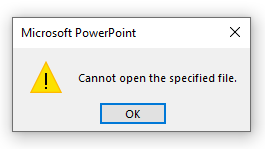
The final phase of getting ready for the presentation is when you arrive at the conference. Use the break before the session to go to the PC that will be used for the presentation and run through the slides. Make sure that the pictures are there and the videos are working.
Right before getting on the stage, you will be sitting in your chair. Instead of hunching in a C curve, sit upright and focus on breathing slowly.
- Breath in for four seconds using your stomach, not the lungs.
- Hold your breath for four seconds.
- Breath out for four seconds.
- Repeat.
The reduced inflow of oxygen will give your body a signal to preserve energy. It will do so by slowing down the heartbeats thus reducing your stress level.
Bonus step: After-action review
Rather than conceiving of presenting as a single competence, think of it as a set of smaller techniques that you have to master one by one. Once you have become competent at one part, turn to the next one.
In the US army after operations, soldiers perform an after-action review. It allows them, “to discover for themselves what happened, why it happened, and how to sustain strengths and improve on weaknesses.” David Goggins, a former US army SEAL turned ultramarathoner, urges every one of us to do an after-action review to get better at whatever skill we want to improve.
First off, write down all the good things that happened. Be detailed and generous to yourself. When analyzing a presentation, praise yourself for a clearly explained graph, for talking to the audience (instead of the screen), for telling a story clearly, and for having well-prepared slides, and other details.
Next, note what did not go as planned. Did your joke fall flat? Did someone ask you a question that should have been clear from your presentation? Were you too nervous? Did you run over time? Spoke too monotonically?
Finally, make a list of things you can improve. Be brutally honest, no one else will see the list. Should you dedicate more time to practice? Should you learn how to make better slides? Speak slower? Be more engaging?
If you do such an analysis after every presentation, you will know how to prepare for the next time. Pick the most important thing from the list and master it for the next presentation. Repeating this process over time will ensure that you will quickly become a master presenter.
Enjoy the process!
After a while you will get used to being on the stage, your body will learn to deal with the stress, and you might start to actually enjoy the process of presenting. There is a reason why pop stars get narcissistic. Having recognition from the audience is a powerful aphrodisiac.
Well, in an academic environment, you should not exactly expect a fan asking you to sign his chest. The best possible response from a cold-blooded academic audience is for someone to approach you to ask more in-depth questions about your work. When this happens, relax and appreciate the recognition! You are a superstar now!
Prepare for your next academic presentation
Using the 10 presentation design ideas that we reviewed will certainly allow you to deliver memorable academic presentations. Unfortunately, knowing about the ways to give powerful scientific presentations and actually being able to do it are two very different things. If knowing how to play tennis would be enough, anyone sitting through hours of YouTube training videos could become the world’s No.1.
What you need is to know how to add presentation skills to your communication tool belt and how to deploy them with ease. My name is Martins Zaumanis and with my online course “Scientific Presentations Masterclass” I will show you how to become a masterful presenter using a system that I developed, called the “Five S presenting pyramid”.
During the course, you will gradually progress through these five pyramid levels:
- Substance: the basics of putting together a scientific presentation
- Structure: devise a convincing narrative
- Show: entertain the listeners to make them remember you
- Stories: select and tell stories to make an impact
- Speaker: overcome stage fright and improve your presentation skills

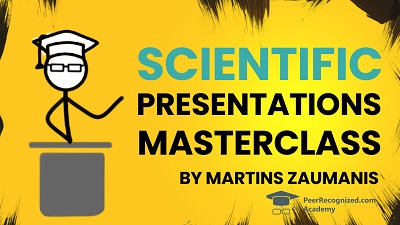
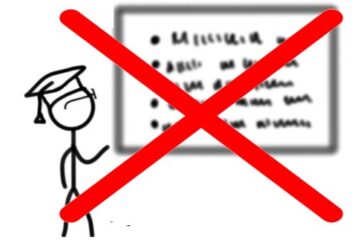
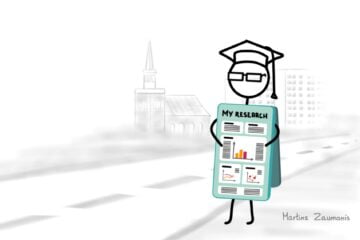
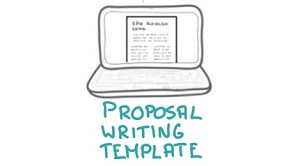
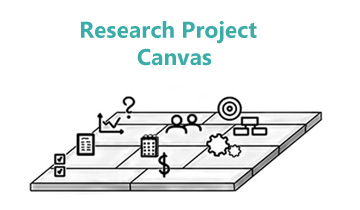

2 comments